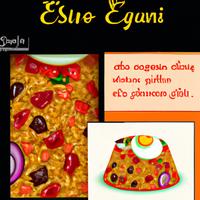
1 serving (200 grams) contains 300 calories, 6.0 grams of protein, 8.0 grams of fat, and 50.0 grams of carbohydrates.

Log this food in SnapCalorie

Nutrition Information
Calories |
352.9 | ||
|---|---|---|---|
% Daily Value* |
|||
| Total Fat | 9.4 g | 12% | |
| Saturated Fat | 2.4 g | 12% | |
| Polyunsaturated Fat | 0 g | ||
| Cholesterol | 0 mg | 0% | |
| Sodium | 588.2 mg | 25% | |
| Total Carbohydrates | 58.8 g | 21% | |
| Dietary Fiber | 3.5 g | 12% | |
| Sugars | 4.7 g | ||
| protein | 7.1 g | 14% | |
| Vitamin D | 0 mcg | 0% | |
| Calcium | 47.1 mg | 3% | |
| Iron | 2.4 mg | 13% | |
| Potassium | 235.3 mg | 5% | |
* Percent Daily Values are based on a 2,000 calorie diet. Your daily values may be higher or lower depending on your calorie needs.
Food Attributes
Source of Calories
About Yollof rice
Jollof Rice is a vibrant West African dish known for its rich flavor and bold orange-red hue. Typically made with long-grain rice, tomatoes, onions, bell peppers, and a blend of spices, it serves as a hearty and satisfying meal. Common additions include chicken, fish, or vegetables, though its recipe varies across countries like Nigeria, Ghana, and Senegal. Packed with essential nutrients, Jollof Rice provides energy through its carbohydrate-rich base and vitamins from its tomato and vegetable content. However, as it's often cooked with oil and occasionally served with fried accompaniments, moderating portion size is key to balancing caloric intake. Variations can be made to boost its healthfulness, such as using lean protein and reducing added fats. A beloved staple in African cuisine, Jollof Rice is a flavorful fusion of tradition and nourishment.



